

Anthony Crawford
1990 Lamborghini Countach review
5 Days Ago
The Mazda CX-3 continues to be a top-seller in Australia, and it's easy to see why even if it's starting to show its age.
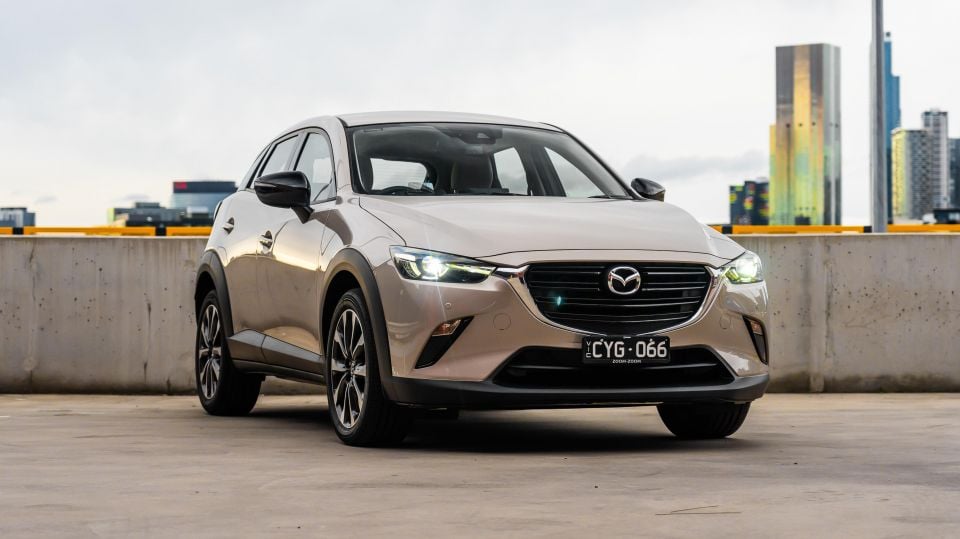
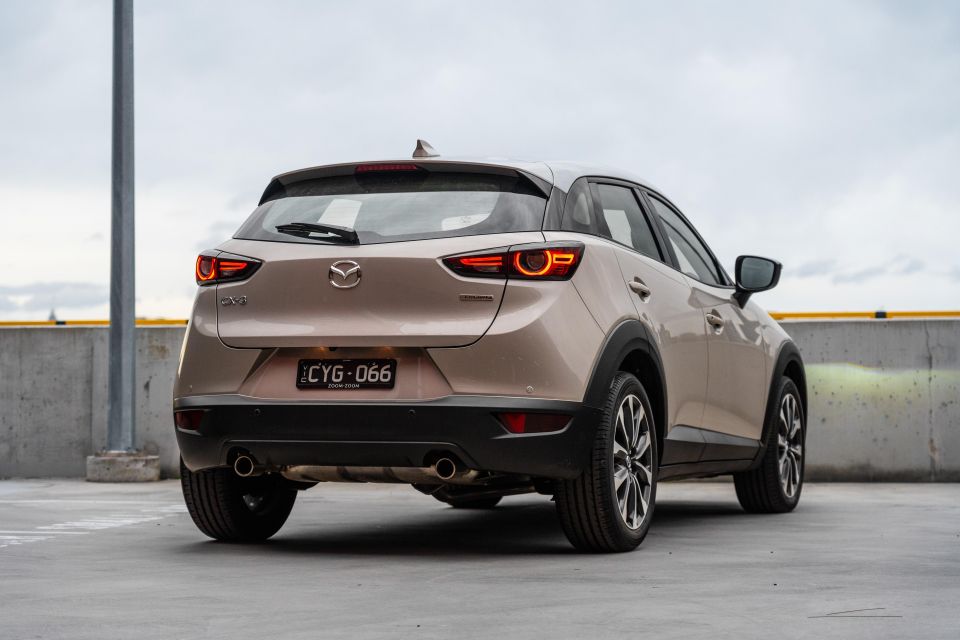

Quickly see how this car stacks up against its competition. Select any benchmark to see more details.
Where expert car reviews meet expert car buying – CarExpert gives you trusted advice, personalised service and real savings on your next new car.
It’s getting on in years, but the Mazda CX-3 is still one of the Japanese brand’s strongest offerings.

It landed here in 2015 and received a facelift in 2018, while it’s continued to receive minor updates here and there as Mazda works to keep it on par with the competition.
The updates seem to be working too, because it outsold rivals like the Kia Stonic and Toyota Yaris Cross by more than 9000 units last year. That places it firmly at the top of its segment in a league of its own.
Mazda had the small SUV market figured out when this car launched, but a lot has changed since then. Even if it is a segment leader, there’s still a bit of modernising to be done on the CX-3.
Tech is getting dated, and while it still works as it all should, it does leave a bit to be desired when you consider the latest generation of touchscreen infotainment you can get in other Mazdas.
WATCH: Paul’s video review of the Mazda CX-3 G20 Evolve
You do still get wireless Apple CarPlay and some extra goodies, which helps to keep it in the running. It would still benefit from a major tech overhaul, but it’s just about hanging on with what it has at the moment.
On test here is the 2024 Mazda CX-3 G20 Evolve, which sits bang in the middle of the lineup. Aesthetically it does the job in a low-key way, and the interior is well presented with unique white and tan upholstery.
Does that mean it can still duke it out with its rivals, or is it beginning to fall behind?
The CX-3 G20 Evolve is priced at just over $31,000 before on-road costs, more than $4000 up from the range-opening G20 Sport.

| Model | Price before on-road costs |
|---|---|
| 2024 Mazda CX-3 G20 Sport | $26,800 |
| 2024 Mazda CX-3 G20 Pure | $29,300 |
| 2024 Mazda CX-3 G20 Evolve | $31,050 |
| 2024 Mazda CX-3 G20 Touring SP | $34,300 |
| 2024 Mazda CX-3 G20 Akari | $38,620 |
To see how the Mazda CX-3 stacks up against the competition, check out our comparison tool.
Mazda seems to be going for a borderline luxury look in the CX-3, and for the most part it seems to work.

The elephant in the room is the fact this is a carbon copy of the Mazda 2’s interior, which isn’t surprising given the common platform shared by the two models.
Some elements have been spruced up for the CX-3 though, most notably in the materials used. The lower section of the dashboard has been fitted with soft-touch tan suede to match the door cards, while some gloss black trim has been added around the gear selector.
Fake carbon fibre features on the door armrests, while the instrument housing has been draped in black leather in a brief excursion from the hard-touch plastic we’re used to seeing here.
There’s also some softer leather on the sides of the centre console for your knees, so it’s so far quite a consistent approach black approach with a couple of nicer tan accents to break it up. That, of course, isn’t the main selling point of the Evolve’s interior.
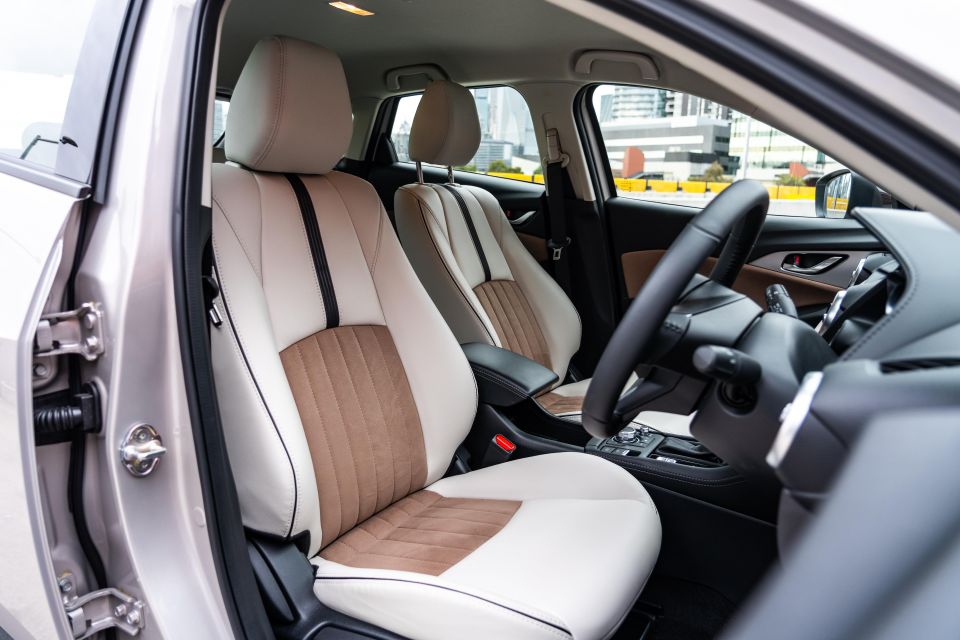
The seats will catch your eye before you even step inside. They’re primarily white with the same tan suede inserts seen elsewhere in the cabin, punctuated by a central black stripe running down the backrest.
Mazda calls the upholstery “White Maztex/Tan Grand Luxe Synthetic Suede”, and in a word it’s certainly striking. I’m sure it wouldn’t be everyone’s cup of tea, but I’m a fan.
It’s unique in a car like this, and I like that in a car at this price point you can still get a flashy interior that isn’t full of the standard blacks and greys seen in other similar cars. There is still the normal black dash, door cards, steering wheel, and carpets, as well as a grey headliner typical for lower-cost cars, but it’s nicely broken up.
I’m sure living with them and keeping them clean would be a different story (especially if you’re transporting kids in the back), but they’re a refreshing novelty for at least the first few thousand kilometres.

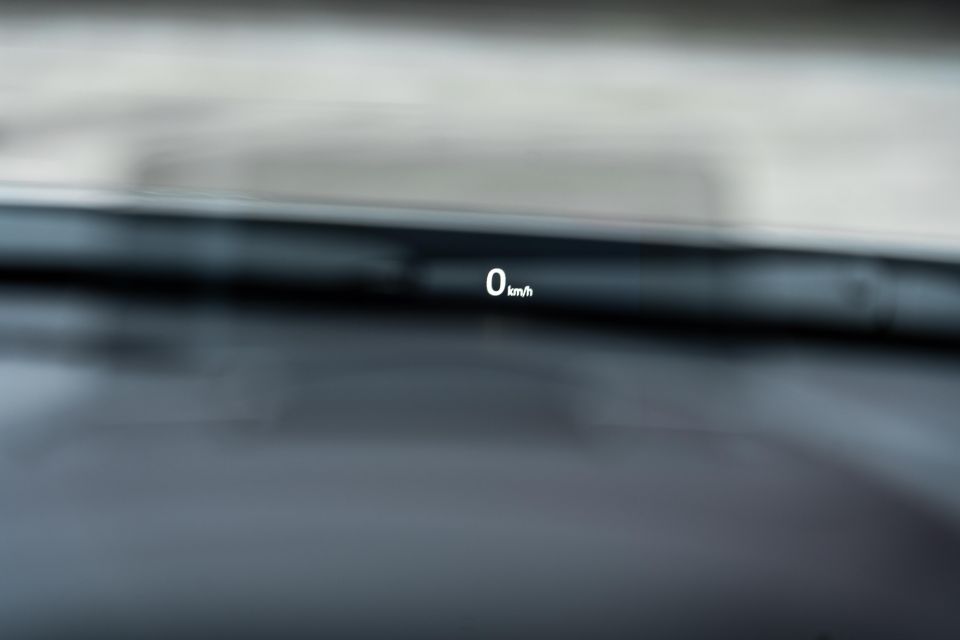
Ahead of the driver is the same steering wheel seen in the Mazda 2, which works just fine. Unlike the rest of the interior it isn’t flashy at all, with just a small selection of buttons for infotainment and cruise control.
Its stripped-back nature means it’s quite sturdy, which gives you the assurance all the buttons will always work as you expect them to. The simple layout also means nothing is left to guesses, and everything is where you’d expect it to be if you’re hopping into this car for the first time.
Behind the wheel is a traditional analogue gauge for a speedometer, flanked by a couple of LCD screens. This setup is again carried over from the Mazda 2, but for those who prefer a more old-school driving interface it’s a perfect fit.
It’s hard to argue with the simplicity offered to the driver, and in a time where cars are increasingly tech-dependent it’s sometimes refreshing to drive a car that still has some hints of the recent past – even if it’s all starting to get a bit dated.
At least you do get a head-up display, which incorporates a clear piece of plastic that folds up with an endearing electric whirr when the car starts up. You need to have your seat adjusted right to see it properly though, but that means it can be a decent guide to getting yourself in the right spot.
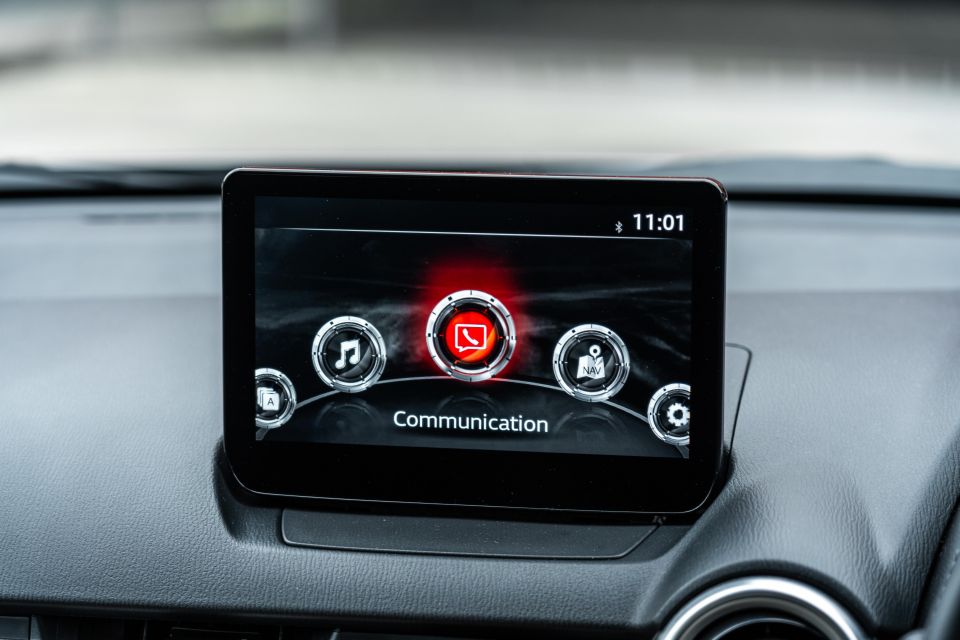
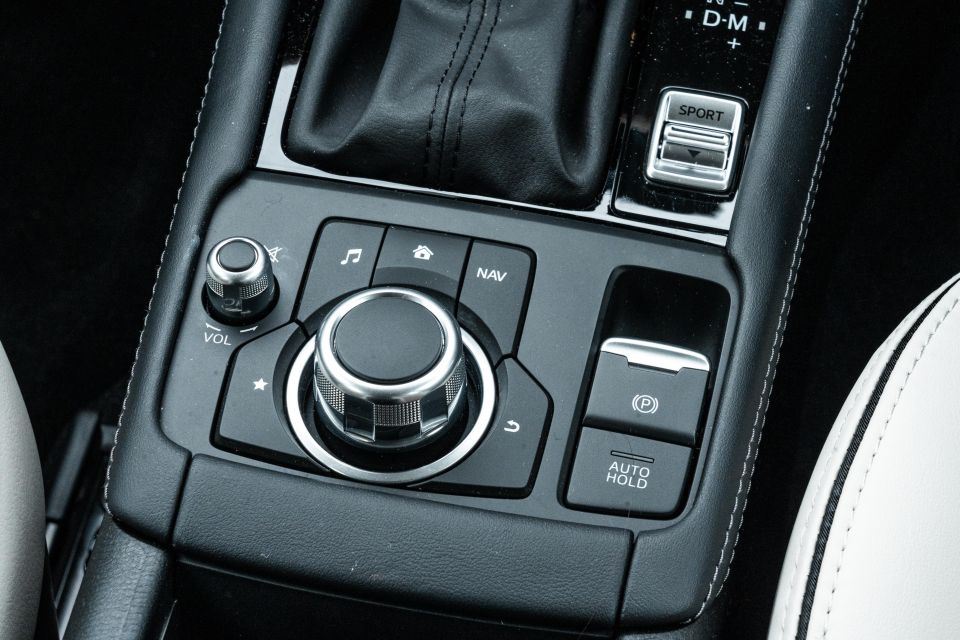
Speaking of dated, my biggest gripe is with the infotainment system. It’s not too dissimilar to what you’ll find in some of Mazda’s other cars on the surface, but this small screen is where something like the CX-3 really begins to show its age.
It’s again controlled by rotary dials on the centre console, and while I understand why that setup isn’t for everyone, I still find it fun to interact with. Sure, it’s clumsy and finicky to navigate something like Apple CarPlay, but it works well enough on the car’s native infotainment software.
Unlike the Mazda 2, this car has a central armrest where you can rest your elbow while operating the central dials. When you’re cruising along the highway, it feels like it takes much less effort to keep your arm relaxed to adjust the volume rather than reaching for a dial elsewhere.
A significant downside is the lack of touchscreen functionality when you’re on the move, which unlike in other Mazdas can’t be changed. It means if there’s something you just can’t figure out with the dials, or if a passenger wants to make an adjustment, it’s needlessly awkward and cumbersome.
On top of that, its graphics are much too early 2000s and it can be slow to respond, especially when the car has just started up.
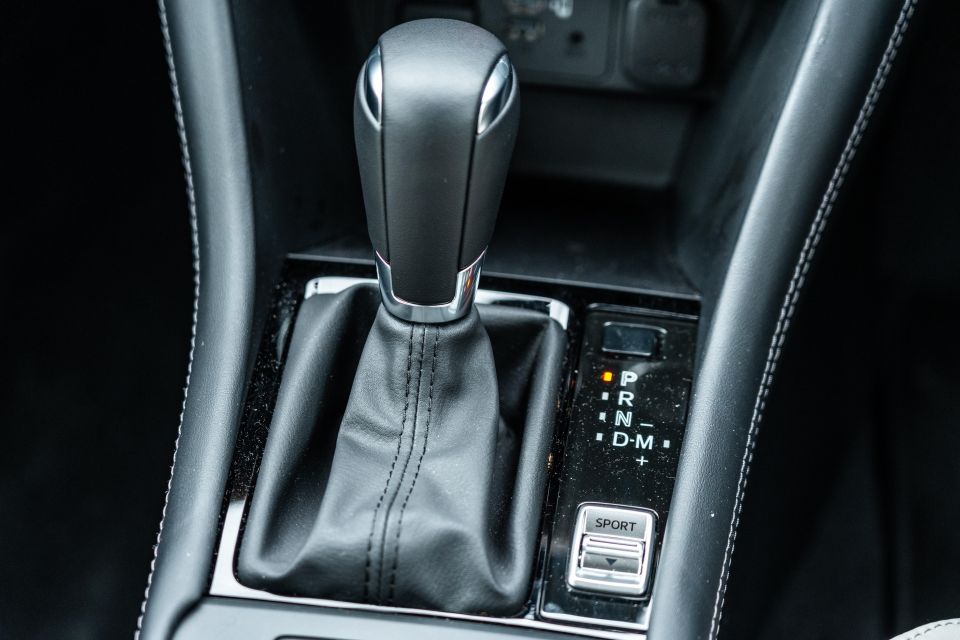
Given its small hatch roots, storage in the CX-3 is limited. There is storage in the centre console, though it’s not the typical lidded-box you’ll find in most other cars. Instead, it’s more of a folding armrest with some small shelves underneath.
You do still get some storage here, but it is compromised. There’s also a small cubby ahead of the gear selector for your phone, but it’s awkwardly sized – my standard iPhone 12 is too tall to fit comfortably lengthways, and there’s no way it’d work sideways. A symptom of the past, perhaps.
Aside from that, there’s a normal glovebox ahead of the passenger and some bottle holders in the doors, but that’s about it. At least there are still some interesting design choices scattered around, like the soft-touch leather upholstery that continues down the sides of the centre console.
The classic tri-dial climate control again makes an appearance here, which works just fine. Unfortunately there is still some gloss black trim creeping in around the gear selector, but aside from the drive mode switch there’s no real reason to be touching the area too much.

The rear seats are really a case of what you see is what you get. There are no extra amenities back here at all, which means no phone charging and no air conditioning.
You do at least get a fold-down centre armrest with cupholders and bottle holders in the doors, and the white upholstery is interesting enough to look at. The seats themselves are comfortable too, but don’t expect to have a lot of headroom if you’re on the taller side.
Additionally, the door opening isn’t the largest, which means it might be a bit of a squeeze to fit a child seat or load any extra cargo. Otherwise, it understandably feels fairly small, though there’s still more space back here than what you get in a Mazda 2.
As with other smaller cars, room for legs and toes is dependent on how the front seats are adjusted, though most people and children should have no problems at all.
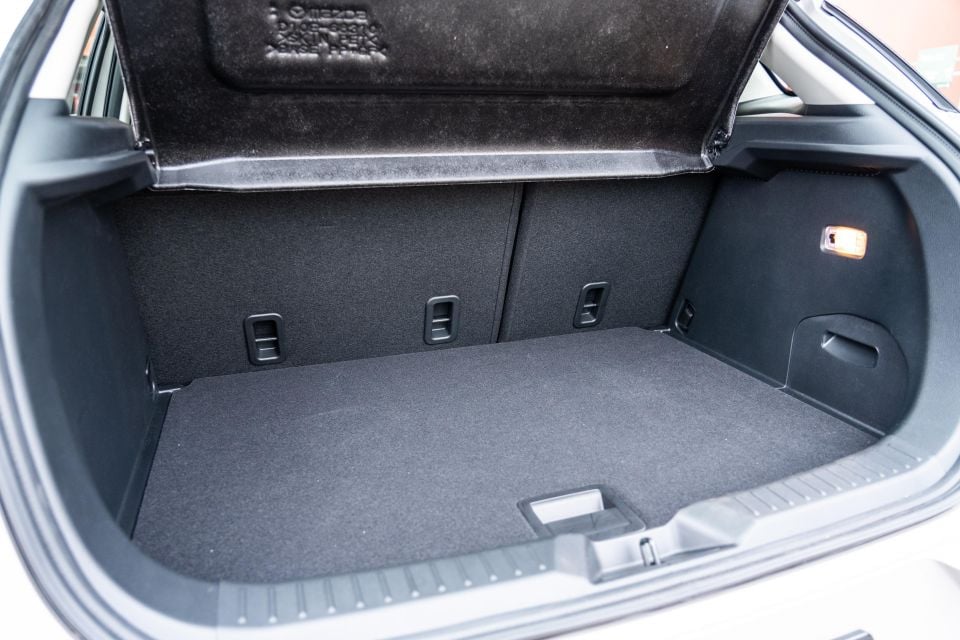
Boot space in the CX-3 isn’t amazing, though it’s still plenty for what most would use it for. Again it’s larger than a Mazda 2, though the key difference here is the load floor is higher and extends further towards the front of the car.
It’s a square area too, which means it’s ideal for boxes or suitcases. Removing the cargo cover reveals much-needed room for taller objects, and while the rear seats don’t fold flat you still get that bit of added space if you need it.
If that’s still not enough, the standard load floor can be lifted to reveal another shallow space underneath for smaller items.
For a smaller SUV, it’s a fair arrangement if you have a young family – I’d just be wary about going for one with white upholstery.

| Dimensions | Mazda CX-3 G20 Evolve |
|---|---|
| Length | 4275mm |
| Width | 1765mm |
| Height | 1535mm |
| Wheelbase | 2570mm |
| Boot capacity (VDA) | 264L (5 seats) 1174L (2 seats) |
To see how the Mazda CX-3 stacks up against the competition, check out our comparison tool.
The entire CX-3 range is powered by a 2.0-litre naturally aspirated four-cylinder petrol engine, which is good for 110kW of power and 195Nm of torque.

| Model | Mazda CX-3 |
|---|---|
| Engine | 2.0L 4cyl petrol |
| Power | 110kW @ 6000rpm |
| Torque | 195Nm @ 2800rpm |
| Transmission | 6-speed automatic |
| Driven wheels | Front-wheel drive |
| Weight | 1294kg (kerb) |
| Fuel economy (claimed) | 6.3L/100km |
| Fuel economy (as tested) | 7.6L/100km |
| Fuel tank size | 48 litres |
| Fuel requirement | 91 RON |
| CO2 emissions | 143g/km |
| Braked towing capacity | 1535kg |
To see how the Mazda CX-3 stacks up against the competition, check out our comparison tool.
While the general driving experience is solid, it’s clear the CX-3 is much better suited as a city SUV.
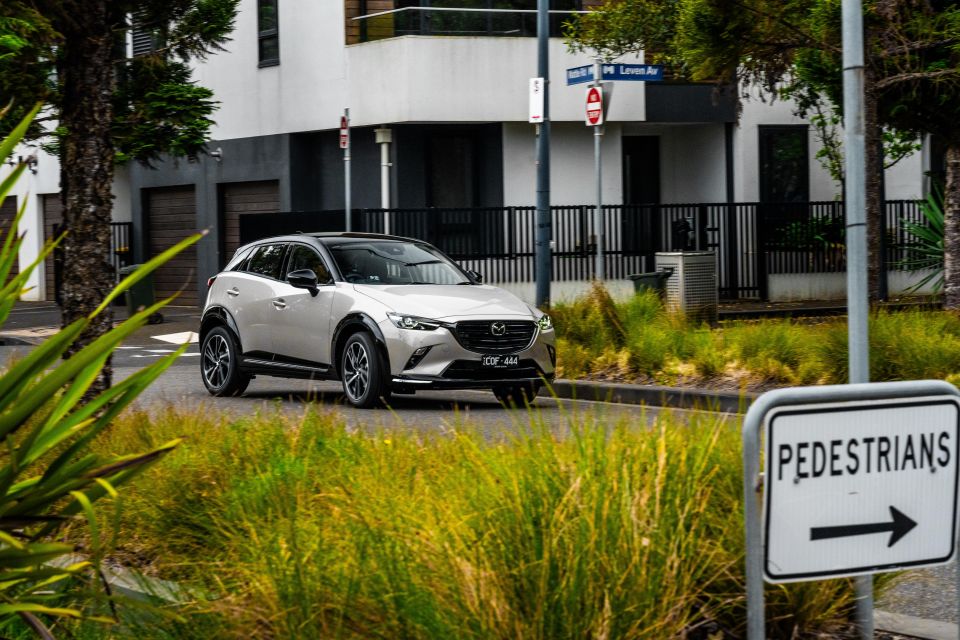
In and around town it’s a nimble little car, with enough power to scoot away from the lights and direct steering to help it around tight corners. The steering isn’t terribly light, which in this case is fine because it brings a more authentic feel.
It starts up with the push of a button, and shifts into gear with a traditional gear selector on the centre console. There’s even a manual mode if you need that, but it expectedly can only be used via the shifter itself because there aren’t any paddles behind the wheel.
That engine is more peppy than I expected too, at least compared to a Mazda 3 with the same displacement. Because it’s a light car, the engine feels like it doesn’t have to work as hard when accelerating to the speed limit.
If you need to get away from a stop in a hurry, there’s even a Sport switch that you can flick in a heartbeat. It doesn’t add any extra power, but it does hold gears longer to utilise most of what the engine has to offer.

Where expert car reviews meet expert car buying – CarExpert gives you trusted advice, personalised service and real savings on your next new car.
Just take care, because if you’re a little heavy footed it will easily spin up the front wheels if the roads are damp. It’s easily avoided, but worth taking an extra second if you need to pull out onto a busy main road in the rain.
The problems come when you hit the freeway. At speeds up to 80km/h, there are no problems at all as it cruises along happily with relatively low revs and a smooth ride.
As you climb further though, it can begin to feel a bit unstable. At standard freeway speeds of 110km/h, it feels like it’s especially susceptible to bumps and gusts of wind.
I’d hazard a guess to say it’s mostly because it really is just a jacked up Mazda 2, which means the centre of mass is higher than it would’ve been thanks to its lifted suspension. The Evolve grade also gets larger 18-inch wheels, which means it’s a bit harsher over bumps than cheaper 16-inch versions.
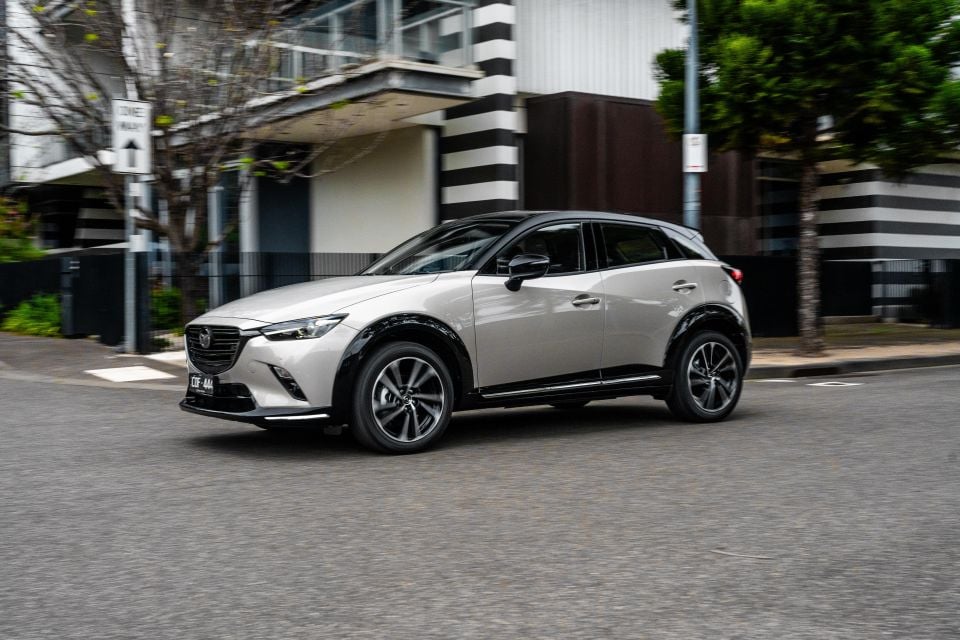
Even so, there’s a weird feel in the suspension over softer, larger bumps on the freeway. The front end seems to float for a second after bumps before settling again, which isn’t the end of the world but it’s worth noting so it doesn’t catch you off guard.
Otherwise, everything is more or less as you’d expect. There’s some driver assist features included like cruise control, though it’s quite rudimentary while lacking adaptive tech and a lane-keep function.
It also misses out on a surround-view camera, which would make it that little bit easier to park in the city. At least it’s a physically small car, which means there’s good visibility all around with the help of a reversing camera – even if it is fairly low-resolution.
Fundamentally, the CX-3 is a very easy car to drive. Its proportions mean people coming from smaller cars aren’t going to feel intimidated behind the wheel, while the engine and transmission combo makes for easy driving in the city and on more open suburban roads.
That transmission in particular is solid, because it doesn’t hold revs, short shift, or hold gears at any point when it shouldn’t. It will even try to sit in higher gears where it can to maximise fuel economy.
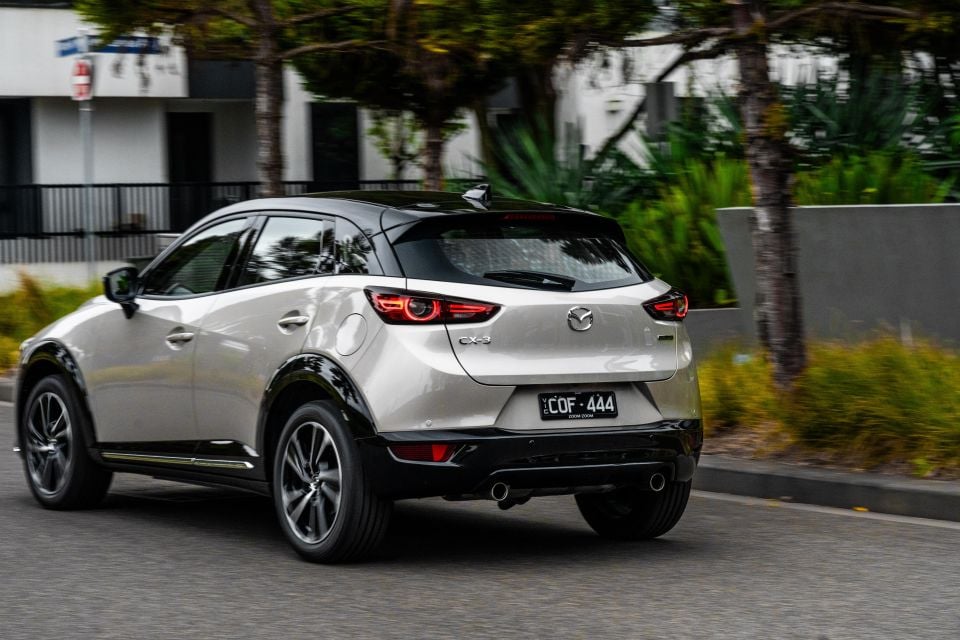
You do get a bit of control either in manual mode or with Sport mode engaged, which is just about as much as you can ask for in a cheaper modern automatic.
Generally it’s a solid driving experience which doesn’t give anything more or less than what you’d expect for this segment. It’s still a small SUV, and if you’re going to be driving around in mostly urban areas it’ll be perfect.
A fair bit of road noise can creep in on more coarse roads and the in-cabin experience can be somewhat unrefined, but it’s nothing that should get under your skin if you’re spending a lot of time with the car.
It even has good quality LED headlights, which makes night driving especially easy. It’s all exactly as you’d expect – nothing more, nothing less.
There are five trim levels in the 2024 CX-3 range.
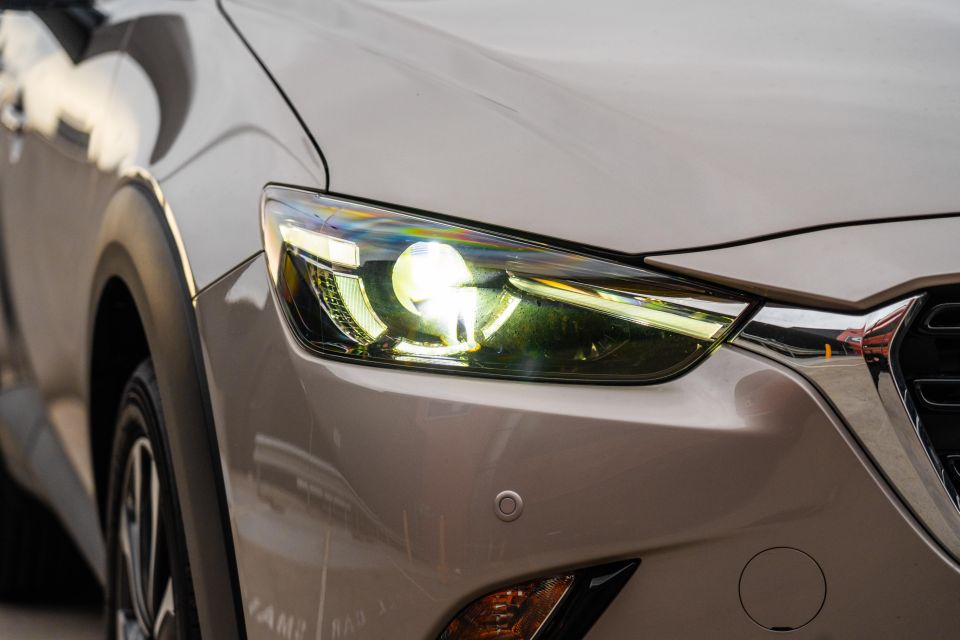
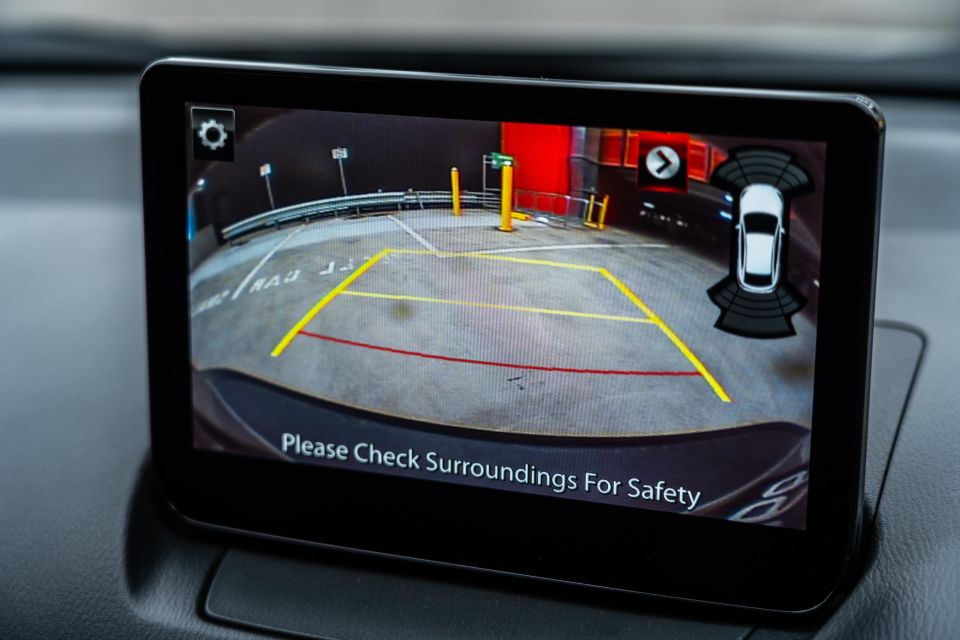
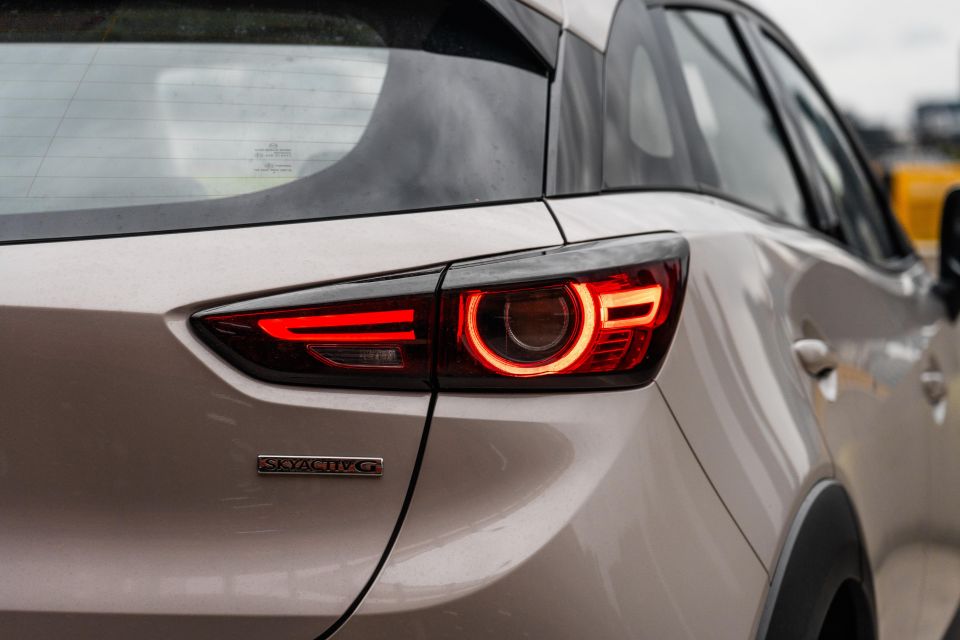

CX-3 Sport standard equipment:
CX-3 Pure adds:
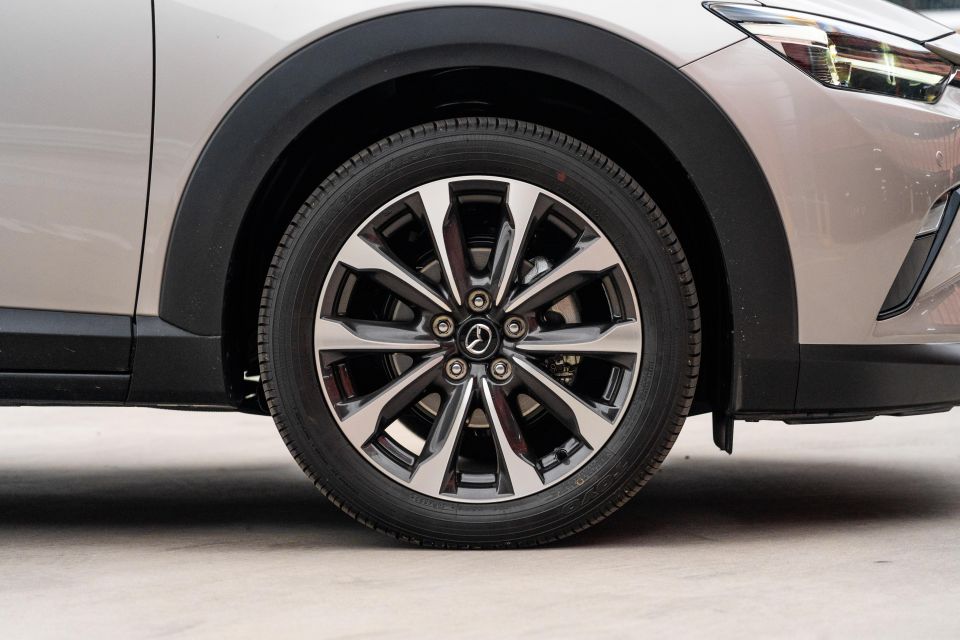

CX-3 Evolve adds:
CX-3 Touring SP adds:
CX-3 Akari adds:
To see how the Mazda CX-3 stacks up against the competition, check out our comparison tool.
The Mazda CX-3 is currently unrated by ANCAP, as its five-star rating from 2015 has now expired.
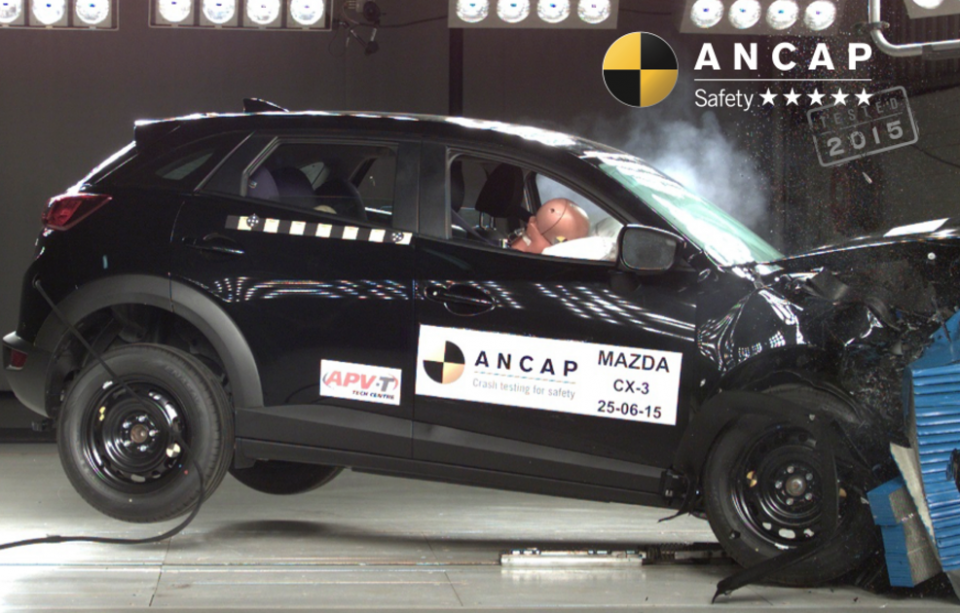
All 2024 Mazda CX-3 models come standard with the following safety equipment:
Pure and above get:
Evolve and above also get front parking sensors, while Touring SP and up get:
To see how the Mazda CX-3 stacks up against the competition, check out our comparison tool.
The Mazda CX-3 is backed by a five-year, unlimited-kilometre warranty.

| Running costs | Mazda CX-3 |
|---|---|
| Warranty | 5 years, unlimited kilometres |
| Roadside assistance | Up to 5 years |
| Service intervals | 12 months or 15,000 kilometres |
| Total estimated service cost | $2200 (5 years) |
To see how the Mazda CX-3 stacks up against the competition, check out our comparison tool.
If you’re in the market for a small SUV, it’s hard to look past the CX-3.
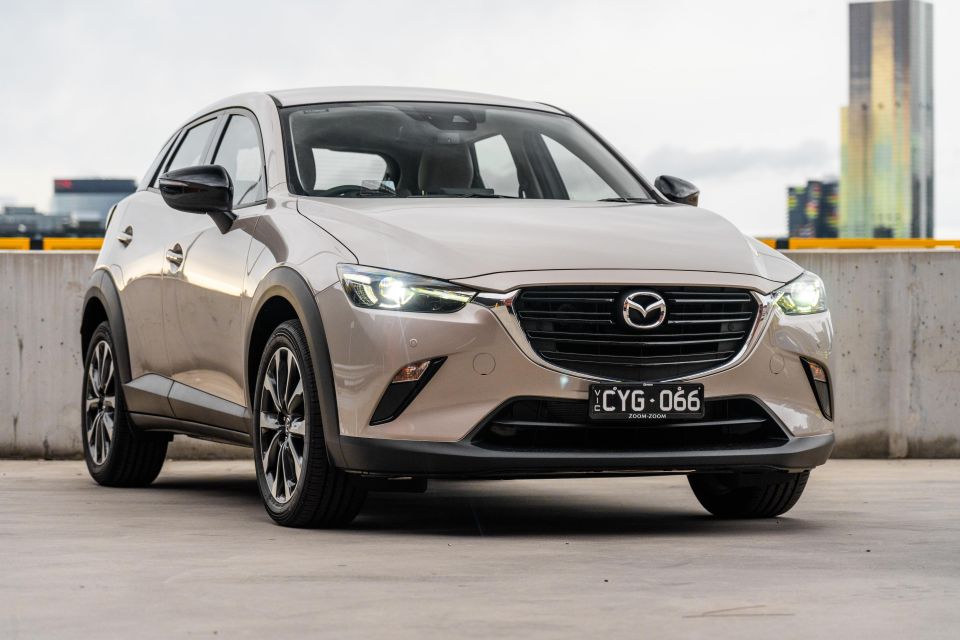
It’s an easy car to live with thanks to its compact proportions, while its drivetrain is smooth and refined. It’s comfortable at low speed, and if you don’t have to spend much time on the highway it’ll be perfect.
Lower-speed highways are certainly workable, though it can be a bit unsettling if you’re driving at speed in especially rough weather. Smaller wheels would make it more compliant, but it’s not a reason to avoid the CX-3 altogether.
It’s unassuming all around and leaves nothing to guesses, which means anyone will be able to hop in and quickly feel comfortable. Its barebones tech will be easy for people coming from older cars to figure out what everything does.

There’s no question it’s feeling dated, but it’s not the end of the world just yet.
There isn’t a huge model range, but there is something in there to cater to most needs. I’d suggest the Evolve strikes a good balance between tech, features, and cost – but the white seats might turn some people off.
In that case, the Pure is almost identical but has smaller wheels, an interior that isn’t white, and is cheaper. If you can live with some more of the features left out, the range does slip under $30,000.
Still, if you’re after something with a little bit of character and aren’t afraid to run the risk of dirt and stains, the Evolve is the one I’d be going for.
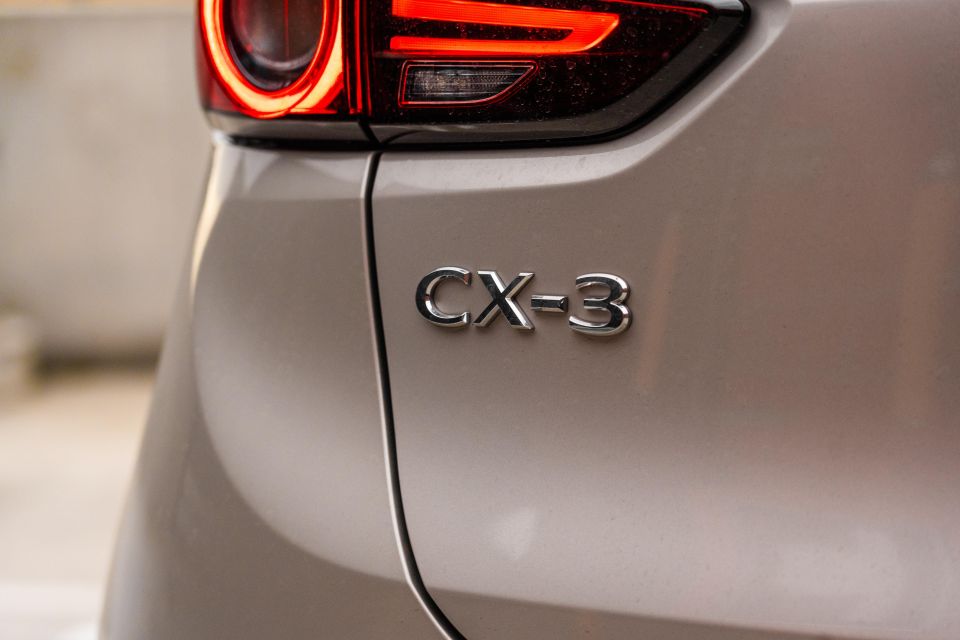
Click the images for the full gallery
MORE: Buy a Mazda CX-3 MORE: Everything Mazda CX-3
Where expert car reviews meet expert car buying – CarExpert gives you trusted advice, personalised service and real savings on your next new car.
Max Davies is an automotive journalist based in Melbourne, Australia. Max studied journalism at La Trobe University and stepped into the automotive world after graduating in late 2023. He grew up in regional Victoria, and with a passion for everything motorsport is a fan of Fernando Alonso.


Anthony Crawford
5 Days Ago


Matt Campbell
4 Days Ago


James Wong
3 Days Ago


Max Davies
2 Days Ago


Josh Nevett
1 Day Ago
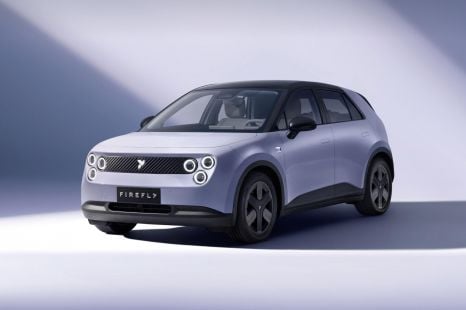

William Stopford
17 Hours Ago